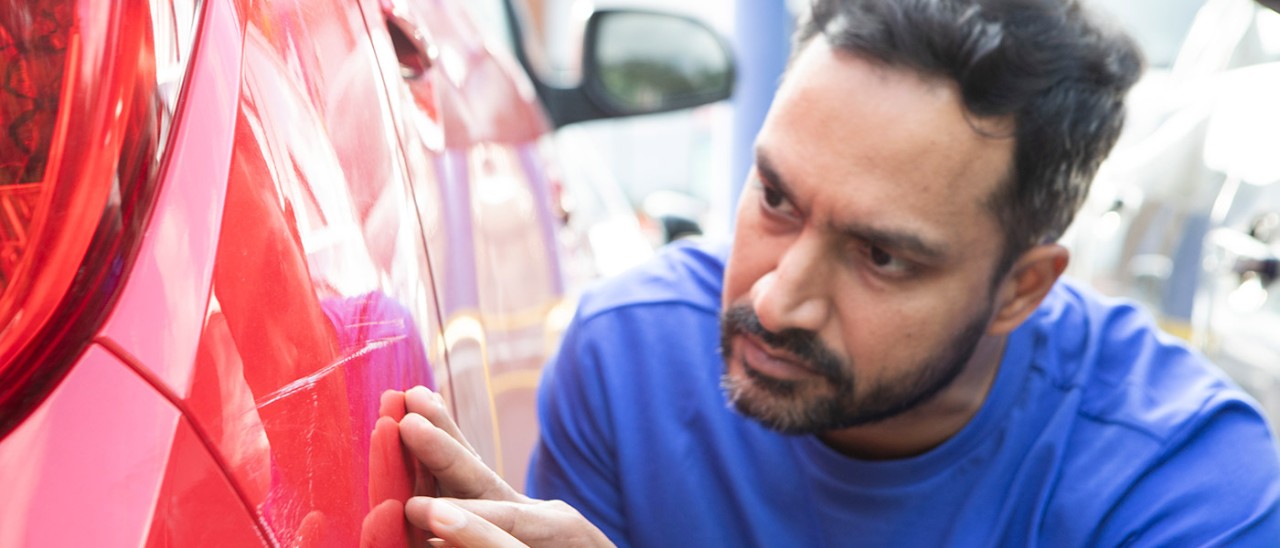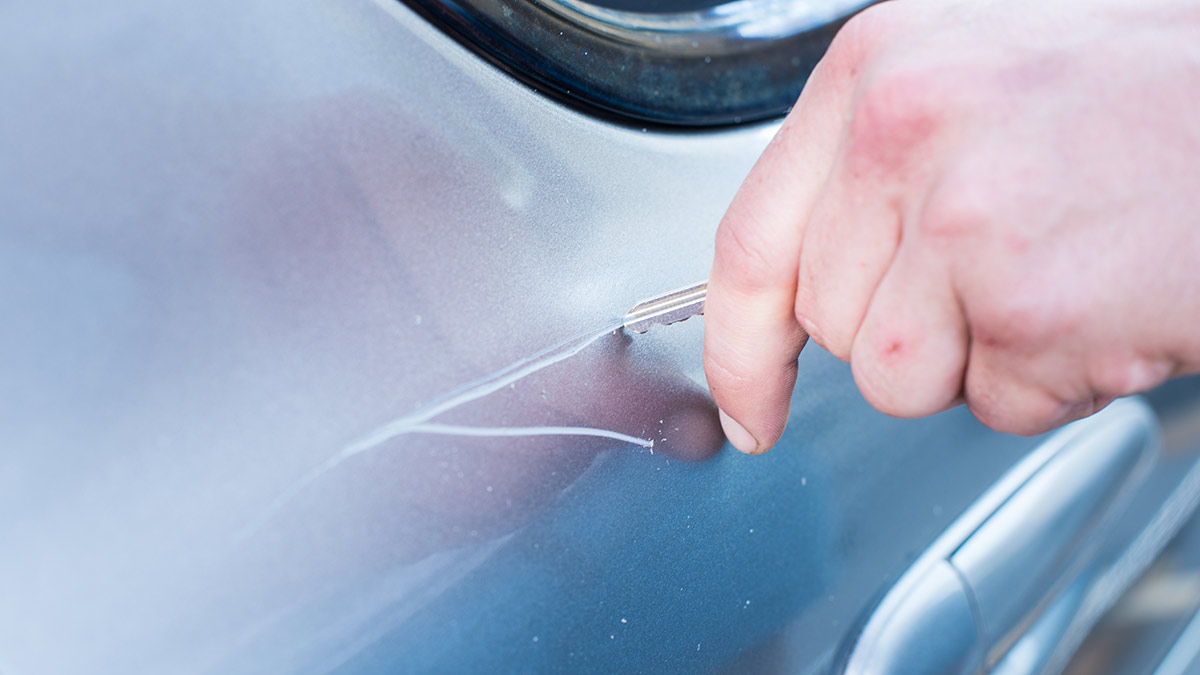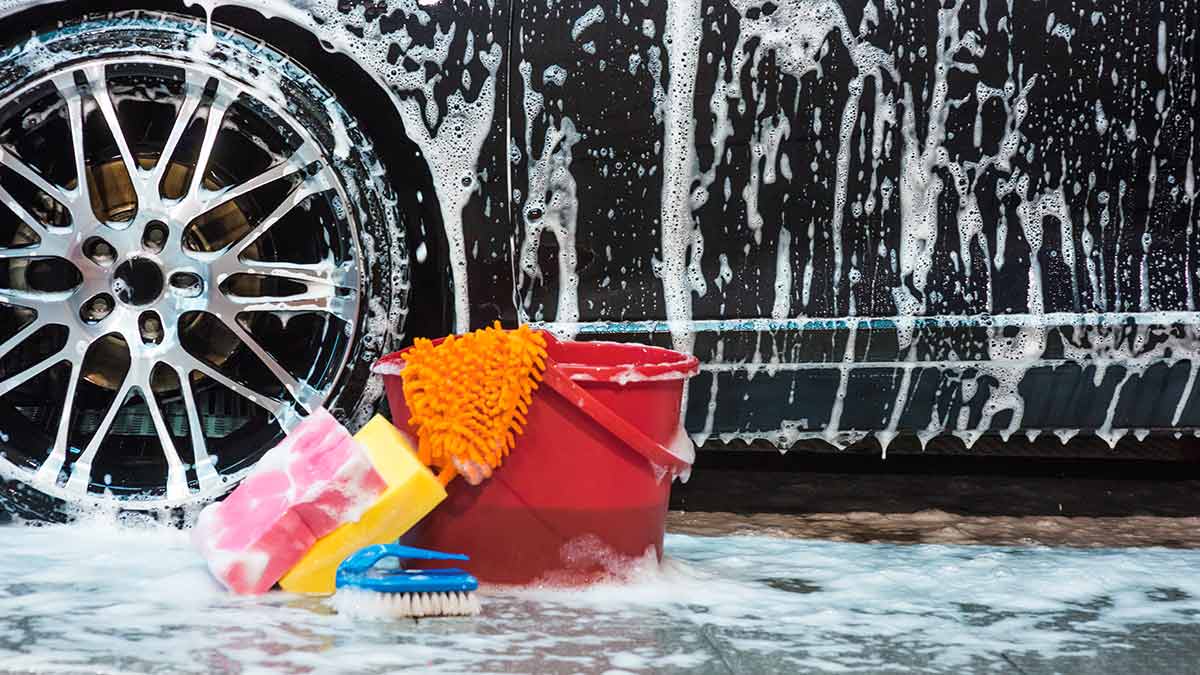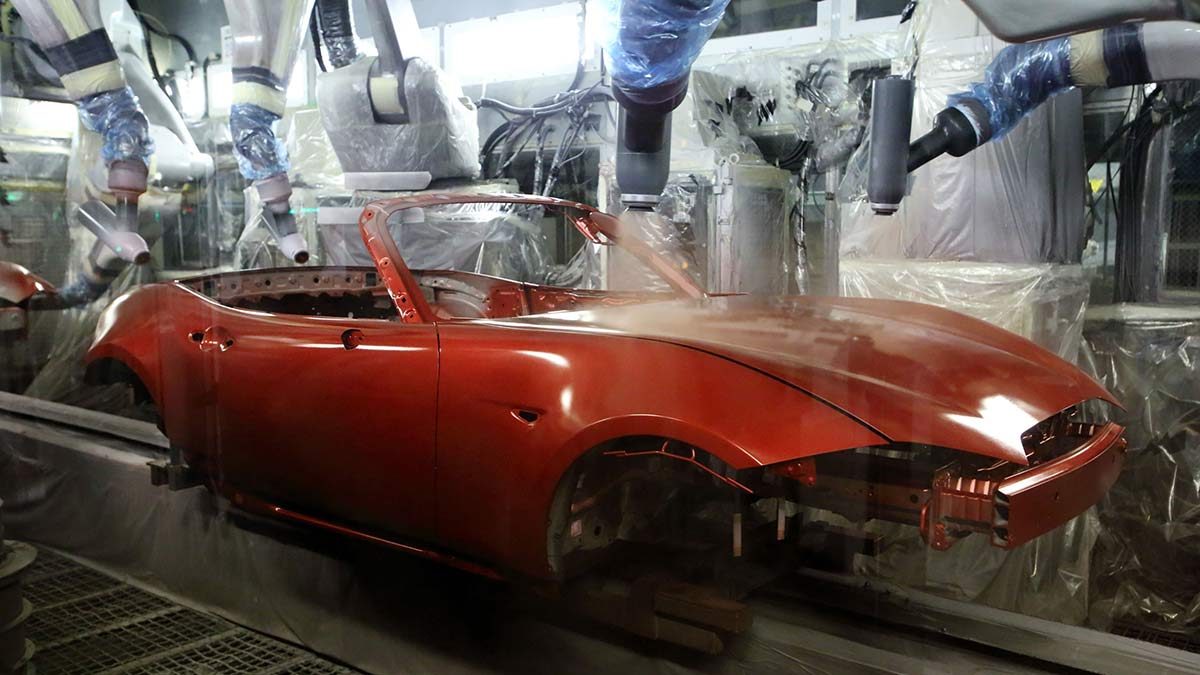The intense sunlight, heat, and dust of Australia's climate can take a toll on your vehicle's paintwork. Here is a guide with tips to help shield your car from paint damage.
How to repair and remove scratches from your car's paintwork

No one likes finding a scratch on their car, whether it’s a shallow mark or deep damage. Here’s some quick answers on how to repair and remove scratches from your car’s paintwork.
Scratches on a car’s paintwork can impact its resale value and overall appearance, especially when the vehicle is relatively new.
When it happens, many car owners want quick answers on how to buff out scratches themselves or whether they need expert help to remove them.
Here’s a handy guide on how to identify, fix and prevent scratches on your car’s paintwork.
Guides to help keep your car in top condition
In this article
Assessing the damage – shallow or deep scratches?
Car paintwork consists of multiple layers: primer, base coat and top coat (or clear coat), with some car owners adding an extra layer of wax for protection. The severity of a scratch and how easy it is to repair will depend on how deep it has penetrated.
The fingernail test
Run your fingernail over the scratch to assess its depth. If your fingernail doesn’t catch, the scratch may only have damaged the clear top coat. If your fingernail does catch, the scratch is likely deeper than the top coat, penetrating to the base coat or primer. In these cases, it may require professional repairs to prevent further damage to your car.
| Car scratch assessment | ||
|---|---|---|
|
Top coat |
Does not catch |
Lighter or faded car paint colour |
|
Base coat damage |
Catches |
White or grey |
|
Primer damage |
Catches |
Metal or rust |

If your car is vandalised by keying, you may need to seek advice from a professional repairer. Image: Getty
How to prevent shallow car scratches
Fine swirl marks and light scratches on a car’s paintwork are common. These are generally caused by tiny particles of dust or dirt being wiped along the bodywork during the car washing and drying process.
Tips to help prevent light scratches on your car:
- Rinse your car thoroughly before washing, getting rid of all the dirt.
- Never use a towel or cloth to wipe dust off a dry car.
- Use a clean sponge or mitt when washing, rinsed frequently.
- Avoid outdated or improperly maintained automatic car washes.
- Always use gentle, non-abrasive cleaning and polishing products.
- Dry your car with a clean, soft, damp chamois.
Even minor scratches to the top coat can affect your car’s resale value and lead to fading over time. Protecting your paintwork is essential for longevity.
More: How to protect your car paintwork
How to buff out shallow car scratches
A shallow scratch or light swirl on your car’s paintwork can often be easily buffed out. To remove shallow scratches, you’ll need two clean microfibre towels and a scratch remover product, which you can find in automotive shops and some supermarkets.
“There are many products on the market to remove mild scratches and swirl marks,” says RACV Regional Manager Automotive Services Phil Mack.
Scratch remover products cleanse and polish light marks, blending them seamlessly into the rest of the top coat. They are also called light cutting compounds. “The deeper the scratch, the more abrasive a cutting compound you will need to use," Mack says.
Steps to help remove a light scratch from your car:
- Wash and dry your car thoroughly.
- Apply a small amount of scratch remover to a microfibre towel.
- Spread the product over the scratch and a 60cm surrounding area.
- Rub in overlapping circular motions with moderate pressure for about 60 seconds.
- Allow the product dry to a haze.
- Remove with a fresh, super-soft microfibre towel.
- Repeat if needed until the scratch is buffed out.
Expert tip: “Make sure you do this in the shade, when the panel is cool and has been washed prior to polishing, as dirt will cause more scratches,” says Mack.

Washing your car thoroughly is important before attempting to remove scratches. Image: Getty
How to repair deep car scratches
Deep scratches or marring often look white because they have peeled away the top coat and base coat to show the primer. They can be caused by scraping your car against objects, vandalism like car keying or environmental factors like hail or stone chips.
“If the paint has been badly damaged, exposing the primer, the only way to repair this is to paint the panel,” says Phil Mack. “This can be a tricky job, especially if the scratch is near a sharp body line, for example, so it might be a good idea to seek advice from a professional.”
DIY deep scratch repair kit
To repaint a deep scratch in your car’s paintwork, you’ll need a bit more equipment, all of which should be available at an auto shop:
- 2000-grit sandpaper.
- Masking tape.
- Automotive primer.
- Base coat paint (see below on how to find your exact colour).
- Top coat product.
- Polishing compound.
- Polishing cloth.
To ascertain your car’s exact paint colour, look for the paint code printed on the car – it’s often found on a sticker or plate on the driver or front passenger’s door jamb or in the engine bay. It might be printed in the owner’s manual, too. You could also try contacting the car manufacturer or an authorised dealer for help.
Expert tip: Car brands may offer genuine touch-up paint through their retail network, so it’s worth asking a franchised dealer if they can supply paint that matches your specific make and model.
Steps to help remove a deep scratch from your car:
- Wash and dry your car thoroughly.
- Tape off the repair area with masking tape to protect the surrounding paintwork.
- Sand the scratched area gently in one direction with 2000-grit sandpaper until you see metal.
- Apply a layer of automotive primer (carefully follow the product instructions).
- Once the primer is dry, apply the base coat that matches your car’s colour (again, following product instructions).
- When dry, apply a top coat as per product instructions, spraying over a wider area to blend.
- Once the top coat is dry, polish with a polishing compound to match the finish.

Mazda dealerships may have genuine touch-up paint that matches factory colours, including popular red shades such as those found on the MX-5 roadster.
When to seek professional help
If a scratch goes deep enough to reveal your car’s metal body, it has penetrated through every paint layer. Air, water, dirt and other particles will start gathering on the metal and could quickly develop into rust. As RACV’s Phil Mack warns, rust is a serious issue that requires expert repair.
“Not only is rust unsightly and devalues your vehicle, but if left untreated can develop into holes,” he says. “Depending on where these holes are, this can cause other issues. If the trims get wet, mould may develop, which can be a heath issue. The trims may rot, causing an expensive repair. In the most serious cases, rust can cause structural issues to the vehicle, which may weaken the vehicle in the event of an impact.”
If you notice rust forming after a scratch has exposed bare metal, experts recommend you take your car to qualified professionals at an automotive repair centre.


